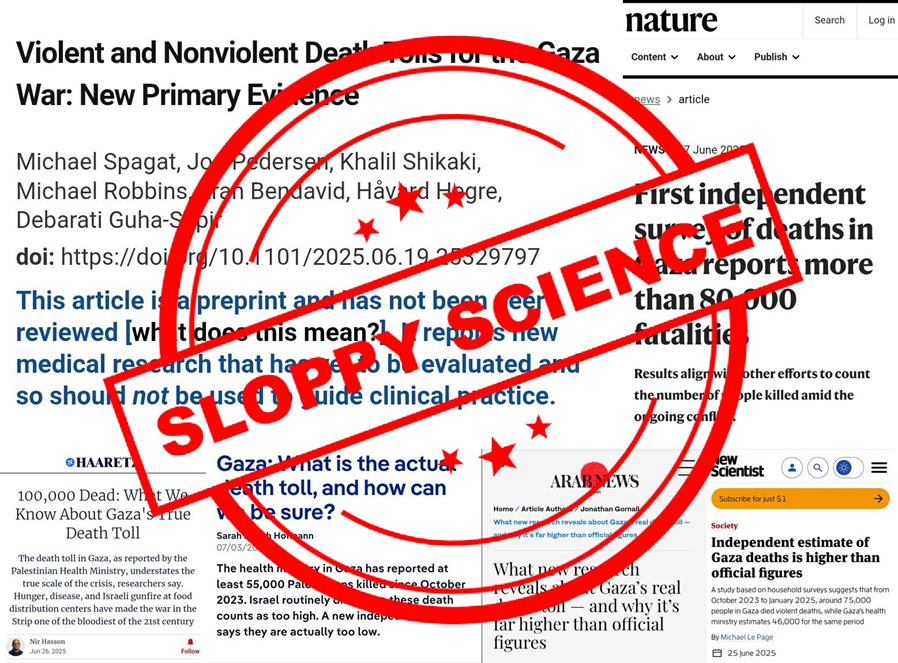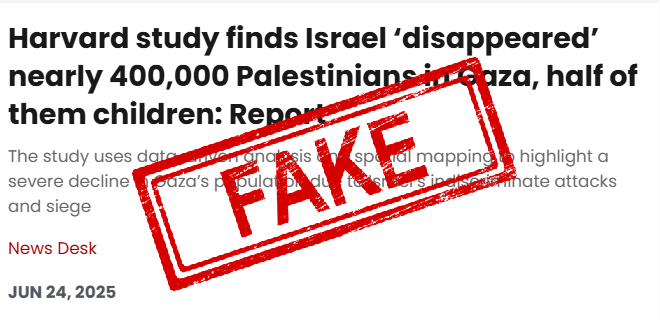
Business trainer and organizational consultant.
Former AI researcher and incorrigible data analysis geek.
How to get URL link on X (Twitter) App


 ² About a week ago, I showed that the Gaza MoH’s own data contains no trace of a “rapid increase” or “acceleration” — let alone “exponential growth” — in malnutrition-related deaths.⏬
² About a week ago, I showed that the Gaza MoH’s own data contains no trace of a “rapid increase” or “acceleration” — let alone “exponential growth” — in malnutrition-related deaths.⏬https://x.com/MarkZlochin/status/1961006970330349577




https://twitter.com/JeremyKonyndyk/status/1959065766508081322² Jeremy Konydyk here conveniently ignores that half the July dataset was tossed aside, and responds only to the 2nd point:
https://x.com/JeremyKonyndyk/status/1959066258340487412


 ² The study's core idea is simple: survey 2,000 households, ask how many lived there before the war and how many died since, then scale up to estimate population-wide deaths.
² The study's core idea is simple: survey 2,000 households, ask how many lived there before the war and how many died since, then scale up to estimate population-wide deaths.
 ² This outlandish claim is allegedly based on a paper by Israeli researcher Yaakov Garb, uploaded on June 3, 2025, to Harvard Dataverse:
² This outlandish claim is allegedly based on a paper by Israeli researcher Yaakov Garb, uploaded on June 3, 2025, to Harvard Dataverse:
 2) Similarly, the number of malnutrition cases listed in the "Current Acute Malnutrition" section is a *projection* for the coming year, not the actual number of currently diagnosed cases. ⏬
2) Similarly, the number of malnutrition cases listed in the "Current Acute Malnutrition" section is a *projection* for the coming year, not the actual number of currently diagnosed cases. ⏬ 

 ² Let’s start with the most glaring omission:
² Let’s start with the most glaring omission:

https://twitter.com/MarkZlochin/status/1854981312366379519² Recently I finished analyzing the names list published in September, in which women and children allegedly accounted for about 55% of all fatalities, and in the process, I encountered a major anomaly that raises some serious questions about the reliability of this data.⏬
https://twitter.com/AnnelieseDodds/status/18143665763273935711a) Most of the aid was not funded by UNRWA

 ² The first ones to make this claim were @save_children in a press-release from June 24.
² The first ones to make this claim were @save_children in a press-release from June 24.

 ² Next, if we look at Deir Al-Balah and Khan Yunis Governarates, we see a similar downward trend with only 6% having poor FCS scores in May - less than half of the pre-war levels. ⏬
² Next, if we look at Deir Al-Balah and Khan Yunis Governarates, we see a similar downward trend with only 6% having poor FCS scores in May - less than half of the pre-war levels. ⏬



https://x.com/MarkZlochin/status/1764249986231939414

 2) There is a nearly perfect match between the number of female UNRWA fatalities and the total death count based on hospital records alone.
2) There is a nearly perfect match between the number of female UNRWA fatalities and the total death count based on hospital records alone.

https://x.com/MarkZlochin/status/1757375368627925094?s=20² In fact, according to the last MoH detailed report, hospital records account for under 60% of total claimed deaths since October 7, and for than less 30% of the claimed deaths in the last two months of the war.

https://x.com/AJEnglish/status/1753401017469633010?s=20² Let’s start with the most obvious - the number of children here is 7,998 – not 11,500 that was recently reported by the same Al-Jazeera, or 13,000 claimed by many other pro-Palestinian propagandists. ⏬

